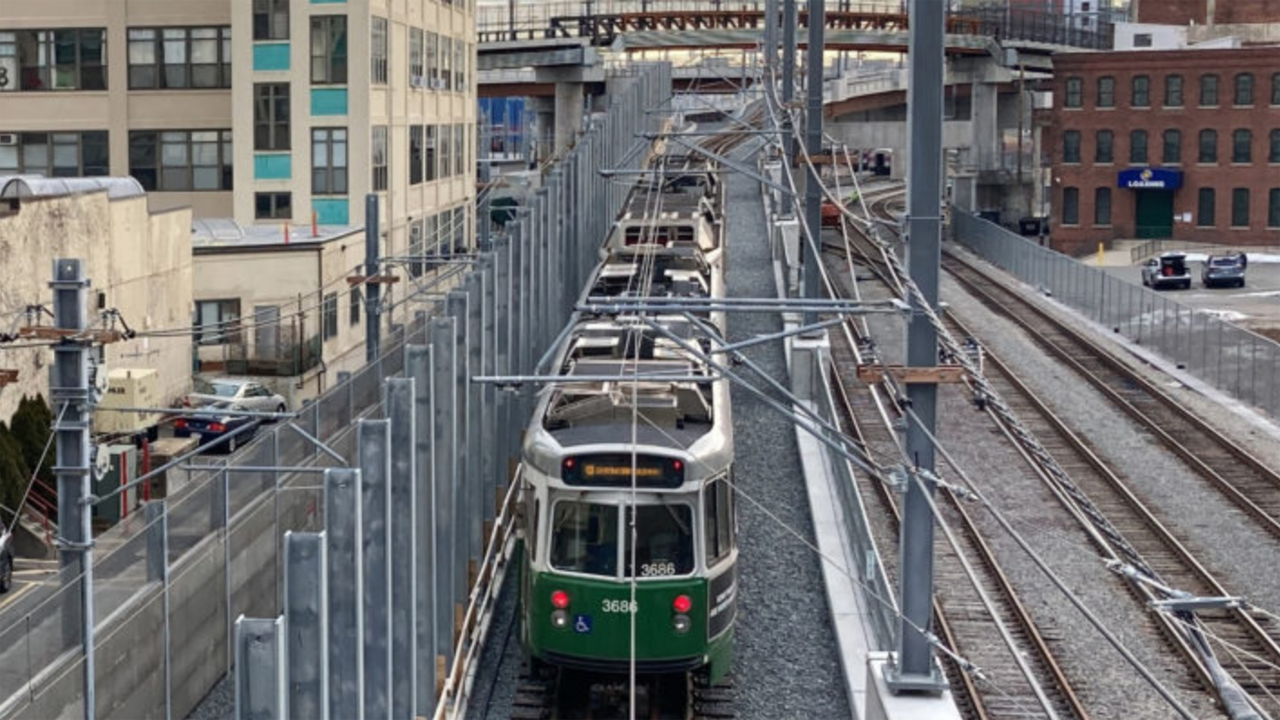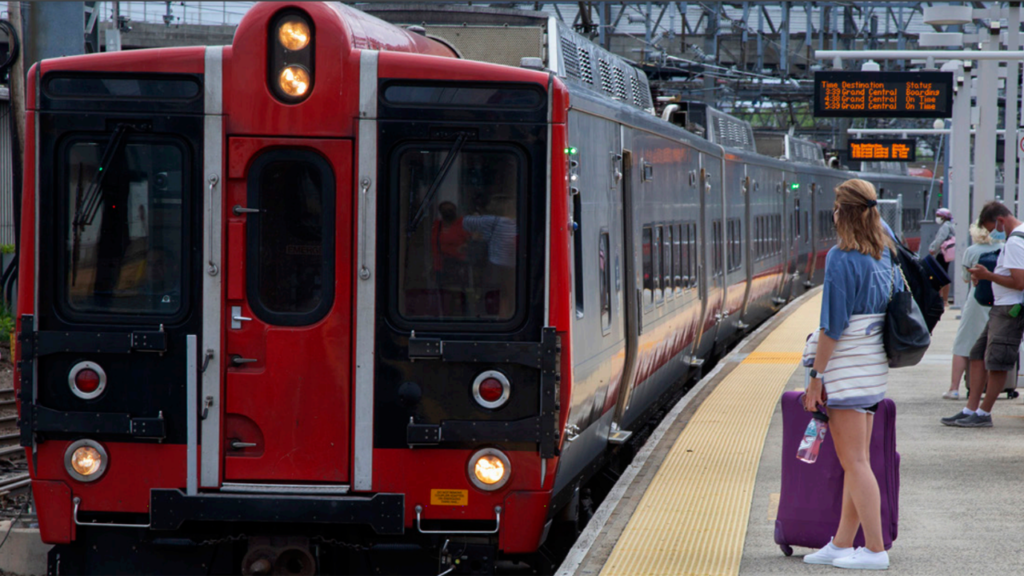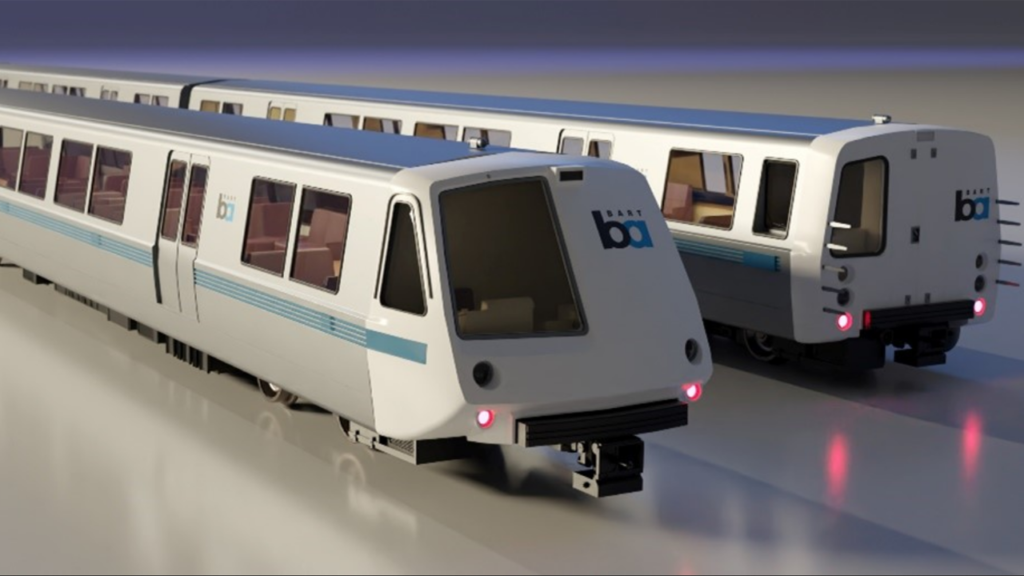
Transit Briefs: MBTA, Metro-North, BART
Written by Marybeth Luczak, Executive Editor
In Massachusetts, the Joint Committee on Transportation on Jan. 3 released a report recommending that MBTA be charged with subway and bus operations only, not Commuter Rail, ferry and construction services, according to the Boston Herald.
A new Massachusetts Legislature report recommends changing Massachusetts Bay Transportation Authority’s (MBTA) structure, leaving it in charge of subway and bus operations only. Also, MTA Metro-North Railroad marks its 40th anniversary; and San Francisco Bay Area Rapid Transit District (BART) teams with Rapido Trains, Inc., to produce 1:87 (HO) scale models of the BART legacy cars.
In Massachusetts, the Joint Committee on Transportation on Jan. 3 released a report recommending that MBTA be charged with subway and bus operations only, not Commuter Rail, ferry and construction services, according to the Boston Herald.
The 78-page report also recommended “moving state safety oversight of the agency from the Department of Public Utilities to a new entity, with both [committee] chairs [state Sen. Brendan Crighton and Rep. William Straus] favoring a move to the Inspector General’s office, citing its independence from the governor.”
According to the newspaper, the committee “was tasked with holding [MBTA] oversight hearings after the FTA [Federal Transit Administration] launched its safety management inspection of the T, which was prompted by a fatality on the Red Line.”
The report stems from those hearings, and “is meant to inform potential legislation for the future of the agency, including the panel’s main stated objective of ‘consistent safe and reliable service at the T,’” according to the Boston Herald.
“The hearings demonstrated a consensus that the T needs to do better, particularly when it comes to prioritizing safety, recruiting and retaining a well-trained workforce, and addressing deferred maintenance and bringing the system into a state of good repair,” the newspaper quoted from the report.
According to the Boston Herald, Straus and Crighton raised “‘ideas’ about approaches that can be taken to improve the MBTA.” Straus said, “One idea for consideration is that the MBTA be allowed to focus on its core mission of serving as the metropolitan region’s bus and rapid transit service agency, thus allowing the authority to become a more responsive and efficient agency with an improved safety record.” Commuter Rail and oversight of operator Keolis Commuter Services, Straus said, “could be transferred to MassDOT’s Rail and Transit Division, or another office, under direct supervision of the secretary of transportation,” according to the newspaper.
“Much like the Commuter Rail, which operates outside of the Federal Transit Administration’s jurisdiction, the MBTA’s ferry service could be transferred to a new water transportation division within MassDOT or a new ferry-based regional transit authority, Straus said,” according to the Boston Herald. “Large capital projects could also be managed by MassDOT, through its newly-created ‘high performance project’ unit, Straus said, citing the success the MBTA has had with removing itself from direct involvement in the Green Line Extension and South Coast Rail.”
Additionally, “[c]iting the termination of the MBTA’s past chief safety officer and whistleblower Ron Nickle in March 2019, Straus said it was important for the CSO to be protected from retaliatory action when reporting safety concerns ‘up and out of the authority when disagreements with MBTA leadership exist.’”
Also noted in the report were safety incidents from 2015-22, according to the Boston Herald, as well as “a lack of transparency from the MBTA, and … the committee’s disappointment with a lack of cooperation from the Federal Transit Administration.”
Further Reading:
Second FTA Safety Probe Targets MBTA
FTA Issues Safety Directives to MBTA
FTA to MBTA: Additional Safety Changes Needed
How MBTA Coped During Partial Shutdowns

Jan. 1, 2023 marked MTA Metro-North Railroad’s 40th anniversary. Since its founding in 1983, the commuter railroad “has made dramatic advances” in service, safety and accessibility; rebuilt the infrastructure it had inherited and made it resilient to climate change; renewed Grand Central Terminal; acquired more than 800 modern new railcars; brought service to seven new stations; implemented the TrainTime app, combining real-time train locations with ticketing and customer service chat; and implemented Positive Train Control (PTC), Metro-North reported on Jan. 3. As a result of its investments and improvements, ridership had more than doubled, to 86.6 million trips per year, just prior to the pandemic, according to the railroad.
Among Metro-North’s other highlights:
- On-time performance rose from 80.5% in 1983 to greater than 97% for each of the past three years, even as the number of trains rose 45%, from 159,344 in 1985, the first year for which records are available, to 230,787 annually just before the pandemic, according to Metro-North. Today, the commuter railroad carries 65%-70% of its pre-pandemic ridership.
- Metro-North has extended electrification of the Harlem Line 29 miles from North White Plains to Southeast, and in 2000 extended the Harlem Line five miles to two new stations, Tenmile River and Wassaic. A third main track was installed in 2004 between Fleetwood and Crestwood, which provided additional capacity for increased Harlem Line service; new express trains to the Upper Harlem segment; increased service to Bronxville, Tuckahoe and Crestwood; and an expanded reverse-peak service, providing access to Westchester employment centers for Manhattan and Bronx residents. In 1999, Metro-North opened a new station at Cortlandt on the Hudson Line.
- In New York City, the railroad restored Grand Central Terminal and the Park Avenue Tunnel that leads to it in the mid-1990s. Metro-North said it also completed a new station at Yankees-E. 153rd Street in 2009, giving baseball and soccer fans the opportunity to use train service for the first time, and established the Hudson Rail Link connecting shuttle bus service in the Spuyten Duyvil and Riverdale neighborhoods in 1994.
- New York Metropolitan Transportation Authority (MTA) unified Metro-North railcar purchasing with Long Island Rail Road (LIRR), and merged policing of the two railroads under the MTA Police Department, created in 1998. More recently, MTA brought construction activities at all MTA properties together under MTA Construction & Development.
- Metro-North expanded travel options for West-of-Hudson riders by launching the Haverstraw-Ossining ferry service in 2000 and the Newburgh-Beacon ferry in 2005. The ferries are timed to meet departing and arriving trains on the Hudson Line. In 2007, in partnership with New Jersey Transit, the Pascack Valley Line began weekend service for the first time, due to the construction of passing sidings at three locations. Additionally, Metro-North said it rebuilt in 2011 the Port Jervis Line with new large culverts and stronger resiliency standards following the severe damage caused by Hurricane Irene.
- In partnership with the Connecticut Department of Transportation, Metro-North replaced the century-old catenary wires that power trains on the New Haven Line and brought service to three new stations: Fairfield Metro, New Haven-State Street, and West Haven. With CTDOT, the railroad also completed the installation of signals, Positive Train Control and passing sidings on the Waterbury Branch in 2021.
MTA reported that it “anticipates continuing to maintain and expand the railroad’s footprint to serve the region in the years ahead.” Work has begun on the renewal of the Grand Central Terminal Train Shed, the structure that supports Park Avenue and side streets overhead between 46th and 57th Streets, and under which all Grand Central trains pass. Further north, MTA said plans are under way to rebuild the Park Avenue Viaduct that carries all trains in and out of Manhattan.
Crews broke ground last year on a second route into Manhattan via the Penn Station Access Project, enabling the railroad to serve four new stations in the East Bronx by 2027 at Hunts Point, Morris Park, Co-op City, and Parkchester/Van Nest, and to provide direct service to Penn Station for New Haven Line customers.
“To see how far Metro-North has come in 40 years gives me, and every Metro-North employee, a deep sense of pride,” Metro-North President and LIRR interim President Catherine Rinaldi said. “A lot has changed since 1983, but the Metro-North core principles remain the same: providing safe and reliable service and the best customer experience possible. As we look ahead to the next 10 years, we hope to celebrate Metro-North’s 50th anniversary having fully recovered our pre-pandemic ridership, with a fully rebuilt Park Avenue Viaduct and a new direct service to Penn Station.”

BART on Jan. 3 reported that it is working with Rapido Trains, Inc., to produce 1:87 (HO) scale models of the Rohr-built, Sundberg-Ferrar-designed BART legacy cars, marking the rapid transit agency’s 50th anniversary, which was celebrated in September 2022.
Available in A, B and C varieties, they are Rapido’s first mass transit vehicles. They include track-powered interior lighting; a close-coupling system that allows cars to sit at realistic distances from each other; multicolor interior detailing; complete underbody detail such as conduits and equipment boxes; and a decal sheet with car numbers and 50th anniversary window decals, according to BART, which noted the cars will run on “conventional track, despite full-scale BART’s wide gauge.” An “A” car (the lead car with the slope-nosed cab) is also available with a special display case for buyers who lack a track setup.
Rapido created the model BART cars using original blueprints and drawings from the 1960s and 1970s, as well as photographs and measurements captured earlier this year at BART’s Hayward Maintenance Complex, BART reported.
According to BART Director of Customer Services Karen Basting, the model trains have been requested by “BART fans” for years, but BART was unable to find a manufacturer that “was up to the task.” The BART model cars are much smaller than railroad coaches—the typical fare of model railroad companies.
“I suggested Rapido make our models because the company excels at incredibly high detail models and loves unusual trains,” said Jay Sathe, a model railroader and designer at BART, who made the initial contact with Rapido. “They’ve even made other 1970s Rohr designs in the past!”
“The legacy fleet will be retired soon and entirely replaced with the Fleet of the Future,” Sathe said. “These model cars are a great way to keep the spirit of the original design alive.”
The cars are currently available for conditional pre-order at railgoods.com and are expected to ship in early 2024.



